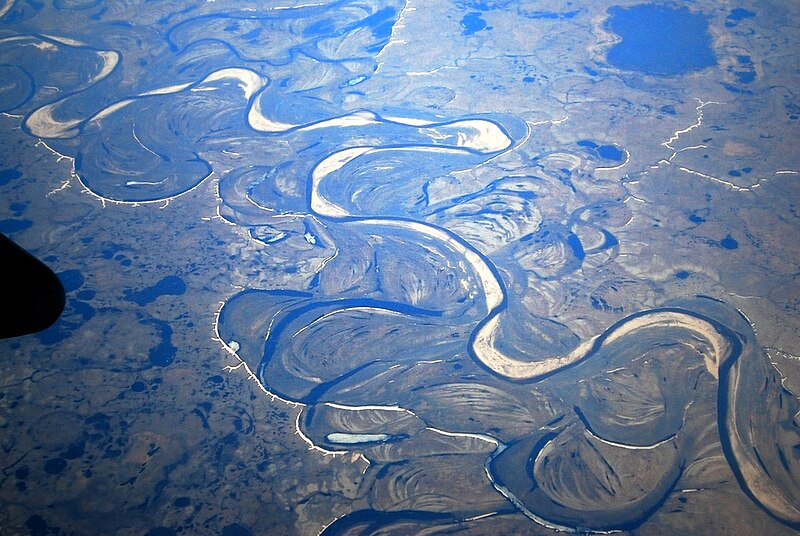Last week’s post focused on man’s success at reducing the predictable floods of large rivers. This week, we’ll make the case that these floods are critical to the survival of many fishes. Here are just a few reasons floods are important to fishes:
1. Nothing puts fish in the mood like a little high water.
As temperatures rise, fishes are fattening up to grow as many eggs as possible. Once the spring rains cause rivers to rise, highly mobile fishes make their move. They swim upstream, sometimes for hundreds of miles, and congregate to spawn. These are important times for anglers too—many migratory fishes such as walleye and white bass support important recreational fisheries. Other commercially important species such as sturgeons and paddlefish, which are harvested for caviar, also rely on seasonal floods for reproduction. Along with over-harvesting, Habitat loss associated with flow alteration is a major contributor to imperilment of these fishes.
 |
| Every spring, anglers gather on Ohio's Maumee River for the walleye run. Source |
2. Fishes live on land.
What may be dry land for much of the year can serve as springtime spawning and nursery habitat for many fishes. In natural systems, swollen rivers spill out into their floodplains—the flat land adjacent to the river. Once this happens, big river specialists such as the massive alligator gar swim up small tributaries and onto the floodplain to lay eggs. There, the young fishes are safer from predators. As they grow larger, the juvenile fishes follow the receding water back to the creeks and eventually on to the river.
 |
| Alligator gar need predictable springtime floods to persist. Photo from American Museum of Natural History. Source |
3. Sometimes a fish just has to move out.
River floodplains are scattered with oxbows—U-shaped lakes that stand where the river once flowed. Oxbows are often home to an amazing diversity of fishes, and provide habitat for slow-water game fishes such as largemouth bass, crappies, and bluegill. Many backwater fishes seek refuge in oxbows during floods. This helps sustain biodiversity and keep sport fisheries healthy.
 |
| River floodplains are characterized by oxbow lakes. Source |
Natural floods can deepen pools and wash away silt from gravel. Deeper pools serve as refuges for many fishes during summer months. Silt-free gravel means more invertebrates for drift feeders such as minnows and trout. Clean gravel is also critical for successful reproduction of many fishes.
Riverine fishes need floods. Hydrologic alterations such as dams have changed the magnitude and frequency of floods. All is not lost, however. As old dams are relicensed, fish biologists often work with dam operators to allow for flows that mimic nature. By mimicking natural flows, biologists can hope to restart the natural processes that allowed fishes to flourish.
--Brandon Peoples

For many floodplain obligates, a flood provides a chance to gorge on a surplus of novel and high-calorie prey items. Species like gars will feed on terrestrial invertebrates and amphibians to which they suddenly have much easier access to larger than average numbers of. Floods also often induce certain plants to drop their fruits (i.e., swamp privet), which are consumed by fish (i.e., catfishes) and redistributed. This is an easy to digest example of Junk et als (1989) flood pulse concept.
ReplyDelete